This Cheshire garden was once a working nursery and has now evolved into a well-planned oasis of beauty
WORDS: GEOFF HODGE. PHOTOS: NEIL HEPWORTH
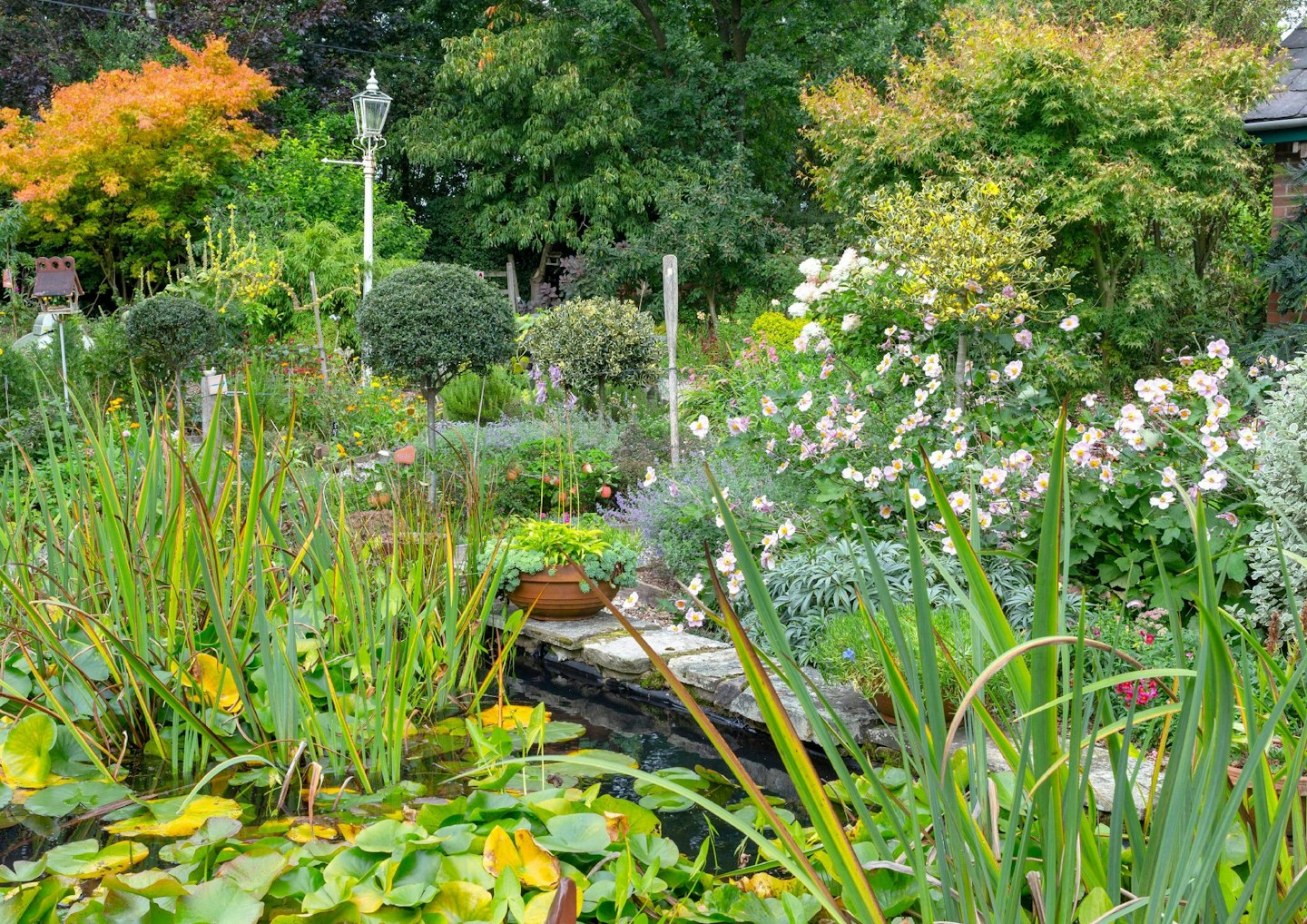
The garden at Lane End Cottage is made up of a series of interconnecting rooms, each with a different feel, linked by pergolas, a large beech hedge-edged circular lawn and a bamboo tunnel. As the garden was created by a former nursery owner, you will encounter many choice and unusual plants, all artfully placed, leaving you in no doubt that here is a garden owner that really knows the intricacies of their plants.
The garden in autumn is full of spectacular leaf colour from acers, including A. palmatum ‘Sango-kaku’ with lovely yellow autumn leaves and bright coral-red branches even in winter, Fothergilla major (mountain witch alder), Nandina domestica (sacred bamboo) and Liquidambar styraciflua (sweet gum). There are floral displays from autumn-flowering bulbs, asters and dahlias among others, as well as vibrant colour and interest from the masses of ripening fruit, such as figs, grapes, pears and apples.
“One reason I still open the garden in September and October is to show people that gardens can still be interesting and full of colour at this time of year. There are usually 150 plants in flower and many more with vivid colour berries “ says garden owner Imogen.
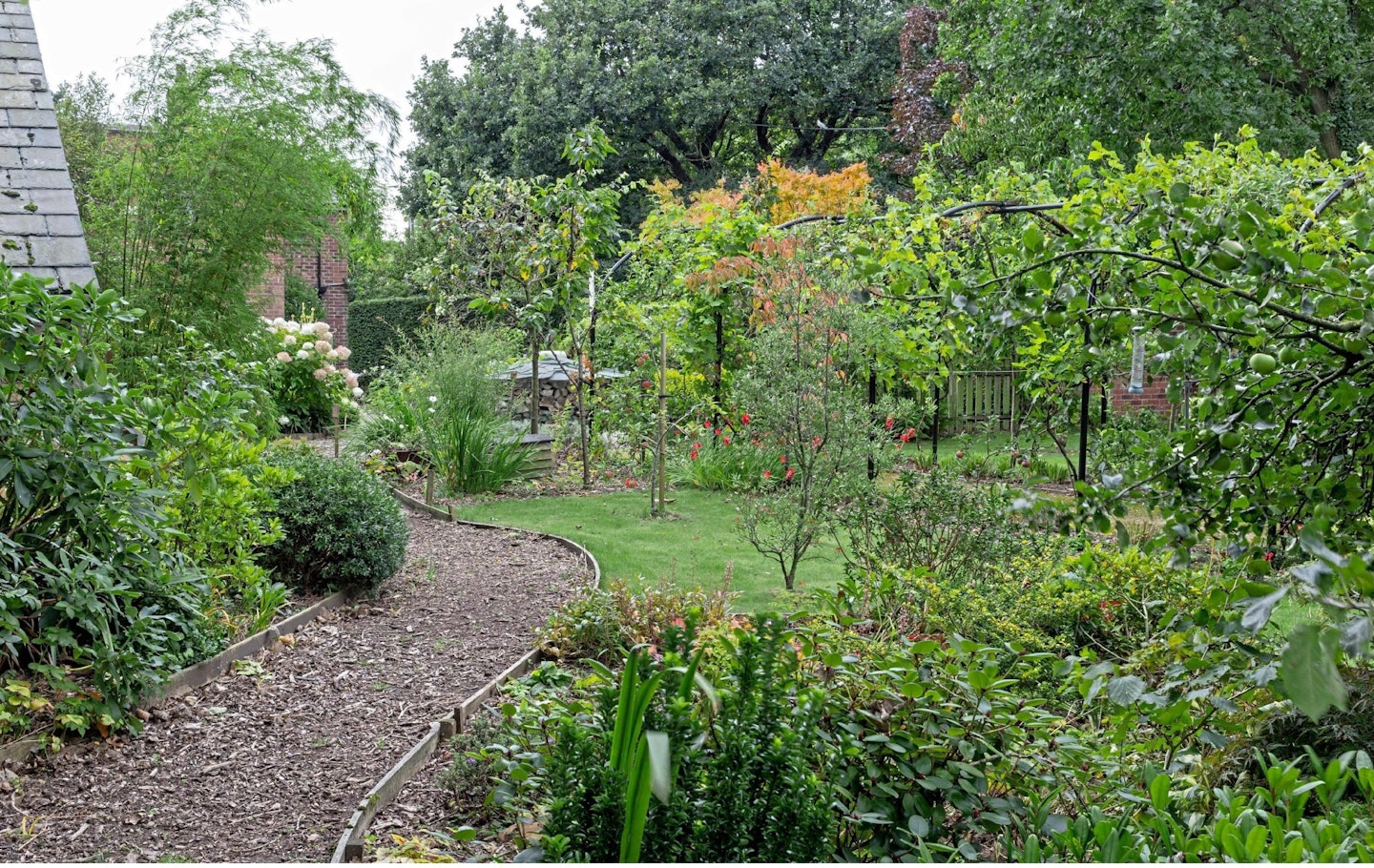
Regular deadheading ensures lots of plants repeat flower and are still flowering well into November, although some roses are left unpruned since many of them produce attractive autumn hips. Autumn is a busy time at Lane End as the fruit from the productive orchard needs picking and storing , or turning into jams, jellies and chutneys.
Many of the flowers and seed heads need harvesting, then drying. Imogen finds hydrangeas, achillea and poppy heads particularly useful. They are used to decorate the wreaths that people make on the Christmas wreath making courses .
A walled orchard, which was only built in 2013, looks very established with fruit trees on the walls and freestanding, as well as redcurrants that grow well and fruit against the north-facing wall. Tree fruit includes apples, pears, quinces, medlar, a couple of figs, fan-trained and freestanding cherries and plums and damson. Specific varieties were chosen for the northern climate and for cropping at different times to provide a long picking season, so there are ‘Discovery’, ‘Katy’, ‘Egremont Russet’ and one ‘Bramley’s Seedling’ apple trees.
Imogen is slowly taking over the vegetable garden, which is mainly used to grow veg that’s expensive to buy in shops or otherwise would be flown in from the other side of the world, with plants for cutting, such as dahlias, but there are also lots of raspberries and multiple blueberries and tayberries.
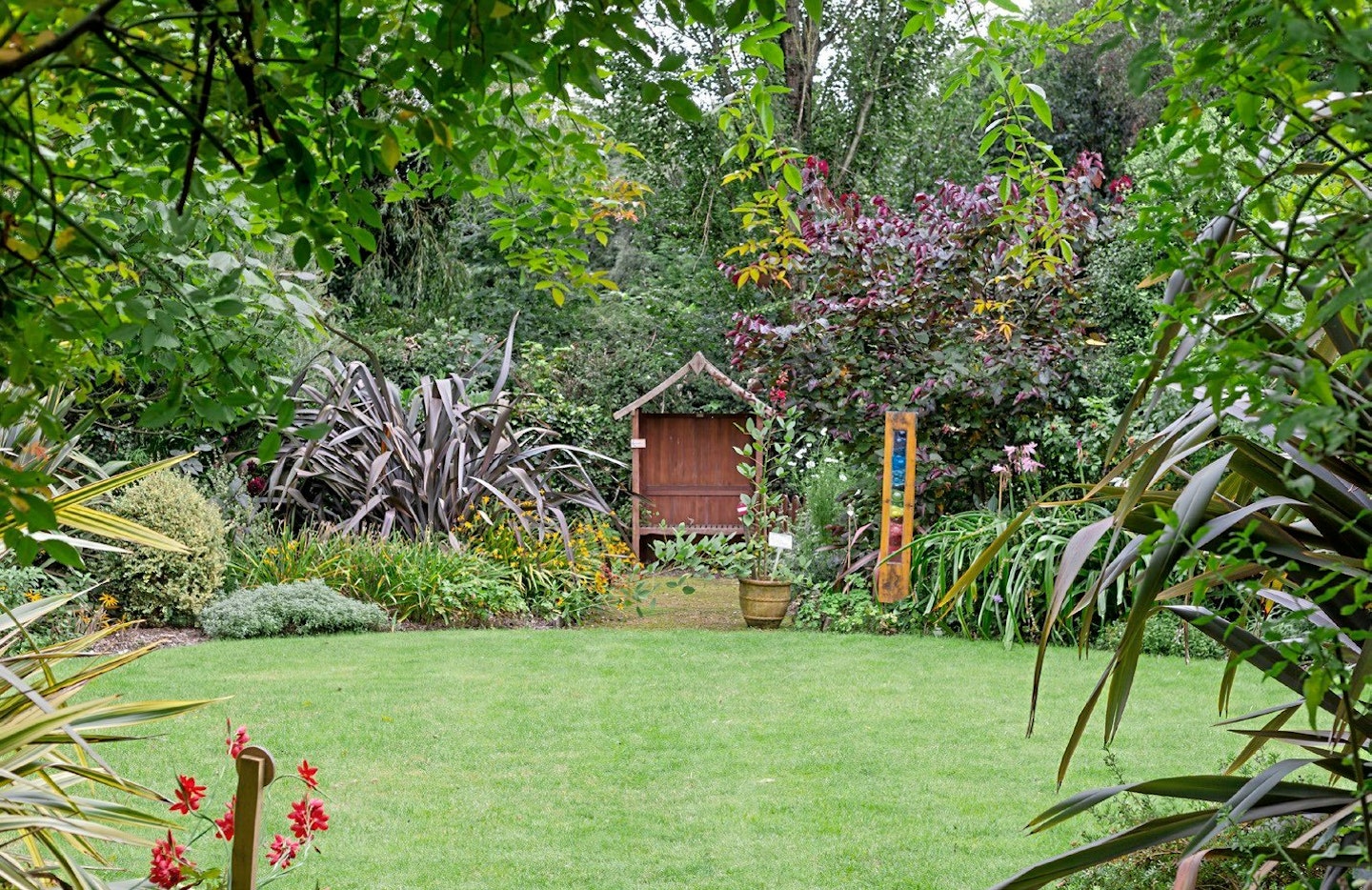
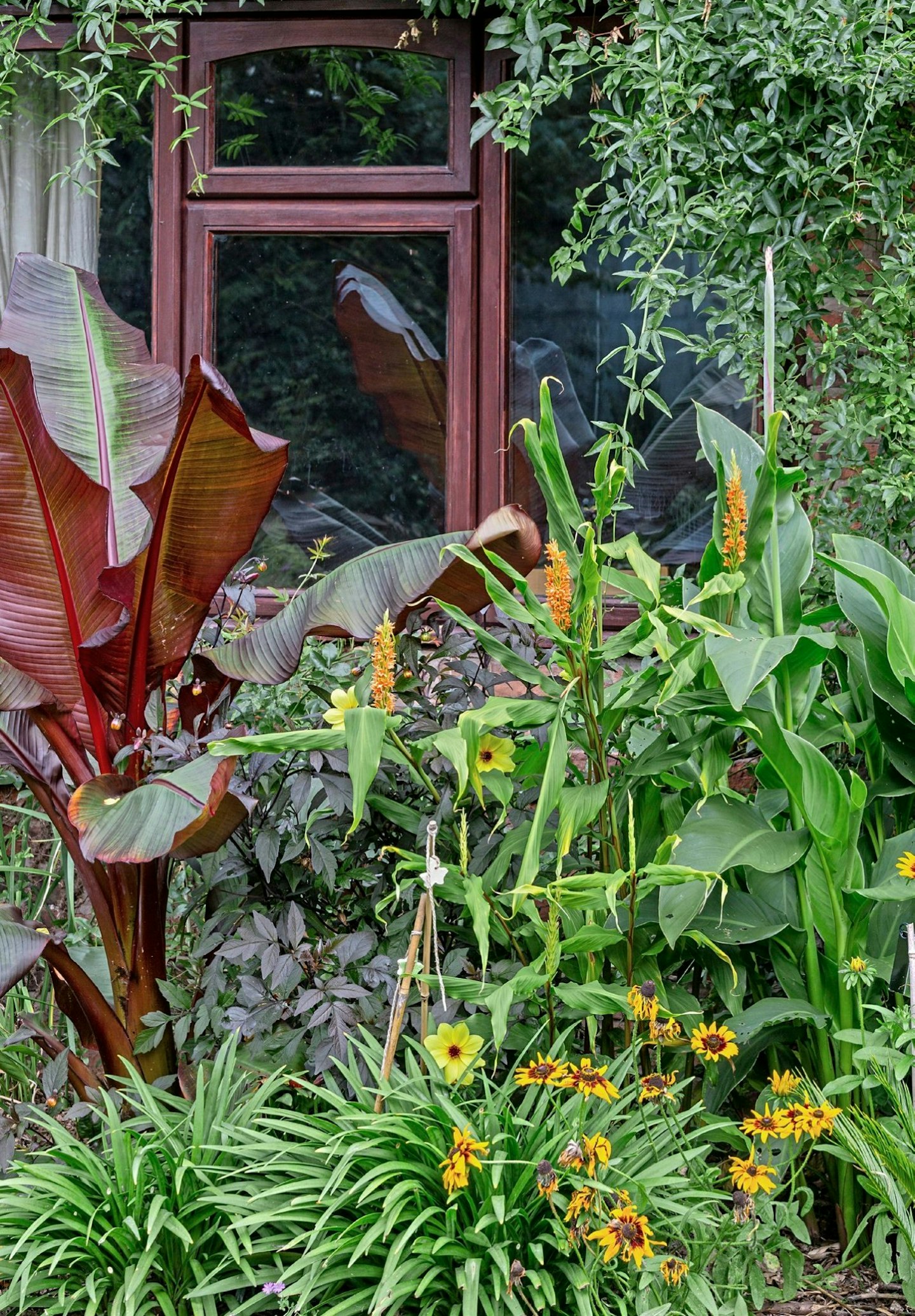
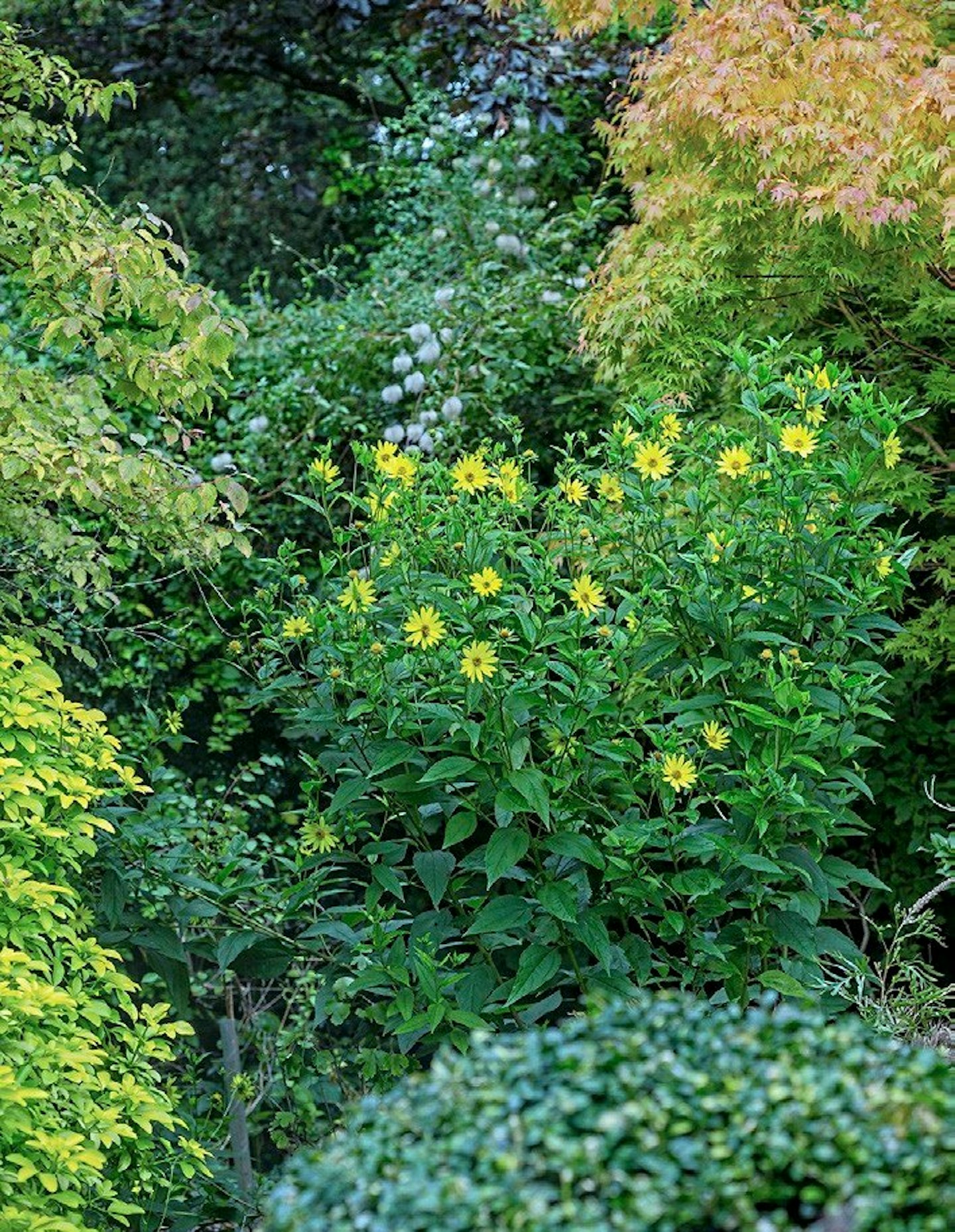
Over the central path through the orchard is an attractive fruit tunnel, which supports espalier-trained apples and pears and a variety of grapevines. The tunnel is made from strong metal arches linked with metal wires.
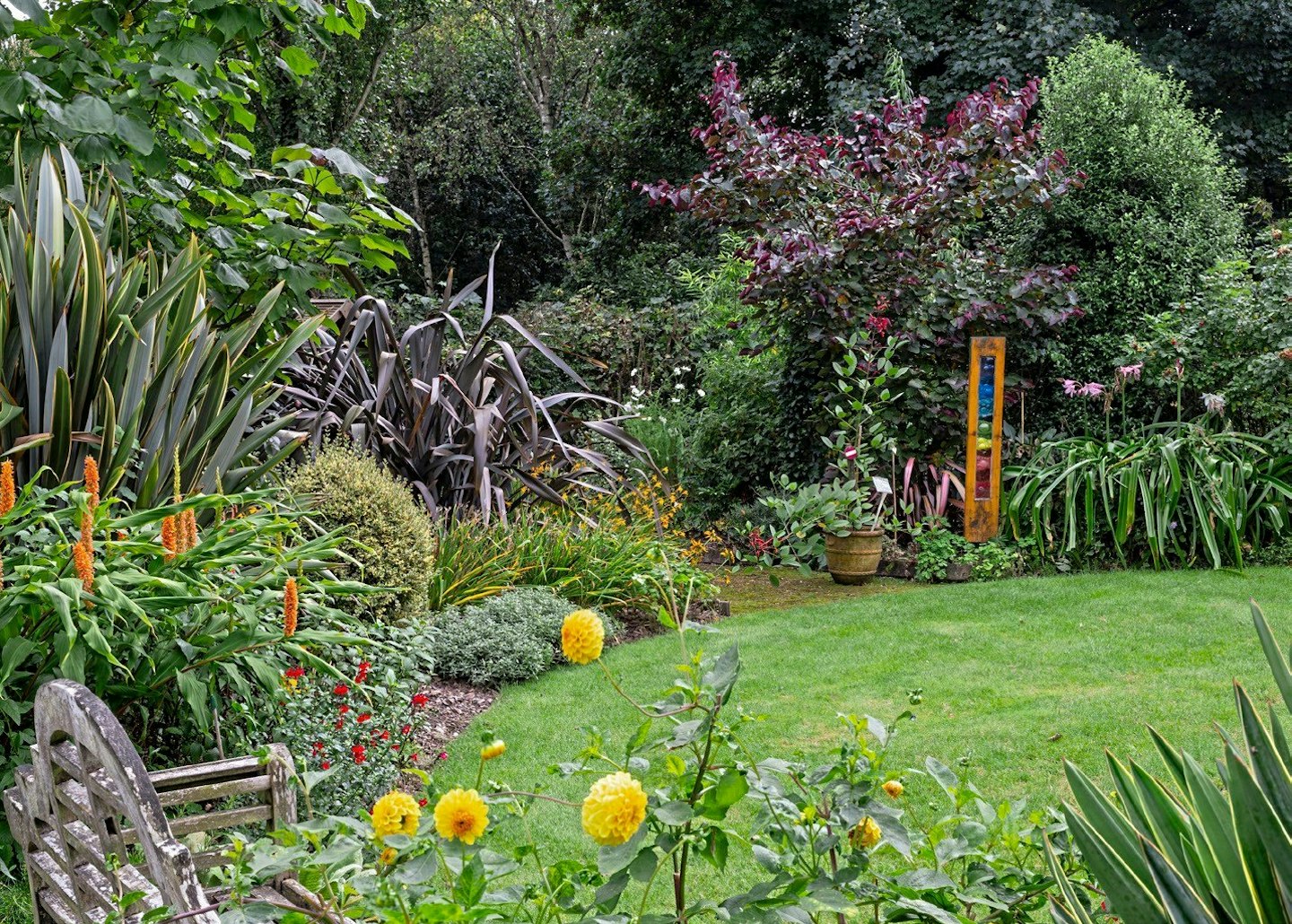
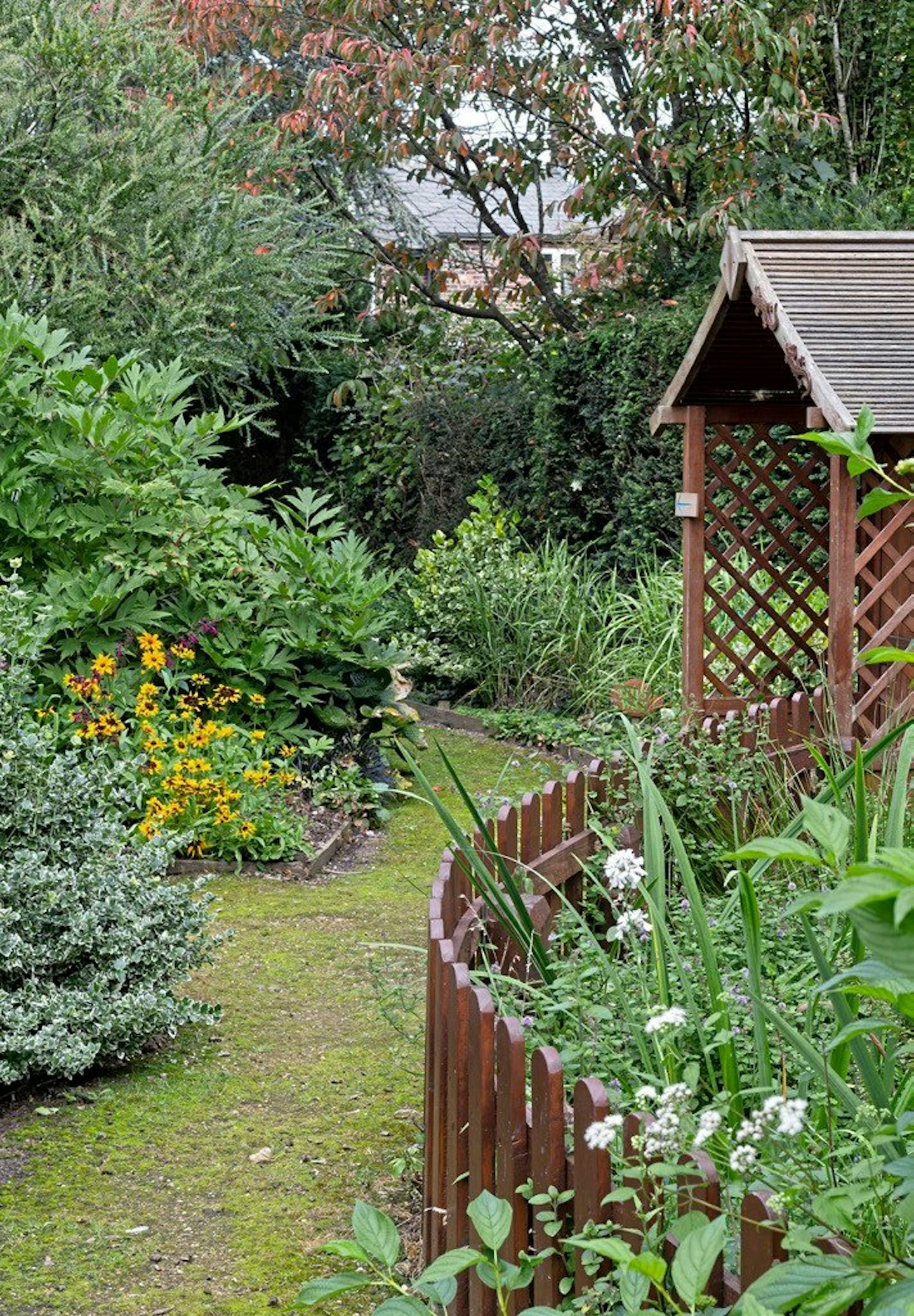
When Imogen and her late husband Richard decided the time had come to close the nursery in 2012, it gave them the perfect opportunity to convert the land occupied by the nursery into a garden. Although they’d been in their house since 1994, the ‘garden’ was mainly occupied by a plant sales area, polytunnels and plant production areas.
A large 300m sq greenhouse is one of the few remaining features from the nursery and used for charity teas on open days and garden and craft courses. Although the microclimate in the garden is relatively mild, the greenhouse is kept frost free in winter and used to overwinter tender plants growing in the garden, including Imogen’s collection of scented-leaved pelargoniums, bananas including Musa basjoo, tibouchina,plumbago aeoniums and abutilons. An enormous white-flowered , scented passion flower has taken over most of the roof this year and will have to be cut back a little so the windows can be shut when the weather gets cold!
“We went for a relaxed and fairly low maintenance style with dense mixed planting in all the beds, mainly to reduce any weeding needed and to help with my desire to make room for all the plants I love. When I plan a border or bed, I always try to have three layers of planting so as one plant finishes, another takes over,” explains Imogen.
She chooses plants that look good for as long as possible, ideally with at least three different seasons of interest, especially for those that are in prominent positions within the garden and are regularly looked at. Although the soil is good quality loam (thanks in part to incorporating masses of spent compost and annual mulching with bark chippings), limestone chippings that had been widely used for paths and beds in the nursery remain in the soil in some areas, which has caused some difficulties with placing acid-loving plants.
“They’ve significantly increased the pH of the soil and will probably continue to do so for many years,” says Imogen. “I used to garden on chalk in Worthing, so that experience has helped with what to do and which plants to choose. There are patches free from limestone and that’s where we plant rhododendrons, camellias and other lime-haters.”

As well as having such a beautiful space to enjoy, the garden has numerous other uses. “I love sharing the garden with others, especially for entertaining, but also with the public such as during our National Garden Scheme open weekends , for charity fundraising, and for education days.
Although Imogen wouldn’t call herself an organic gardener, she has purposely reduced the number and amount of chemicals used on the garden. “I don’t use pesticides, and rely on the local wildlife to help clear up any pest issues. We have hedgehogs that have a family in the garden each year .Since they arrived , I’ve hardly seen a slug or snail as they seem to be their favourite meal.
“I’m not a particularly tidy gardener! There are areas where piles of logs have been left and leaves are swept into piles. Then I have bird feeders and boxes, as well as mature trees and shrubs for nesting in, plus lots of wildlife-friendly plants. The pond is also an essential source for wildlife and Imogen says they’re underrated features in the garden later in the year. “Ponds and water features look great in winter if surrounded by plants that have had their old stems frosted.” Whatever the season, this plant lover’s garden always proves a delight.


